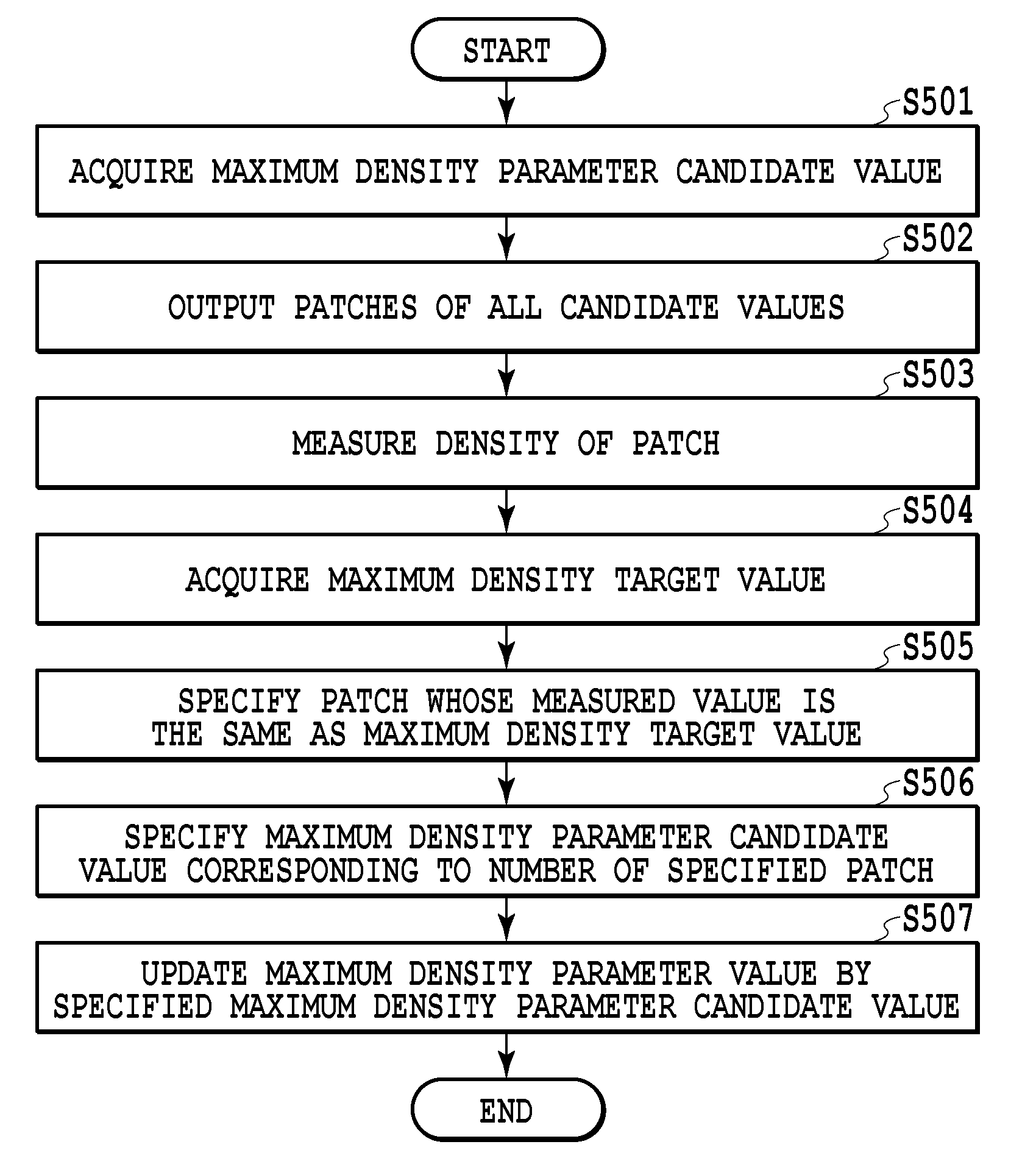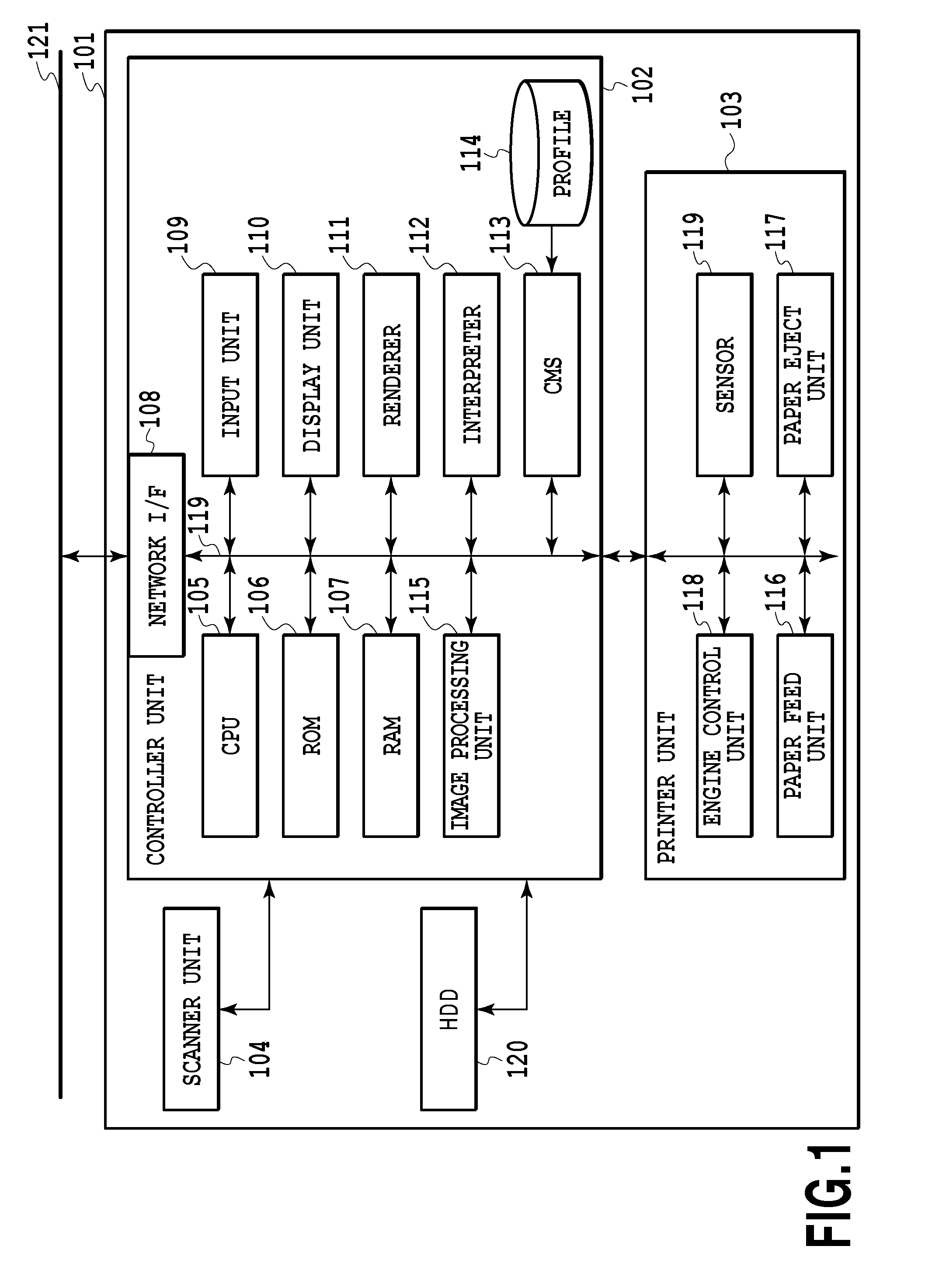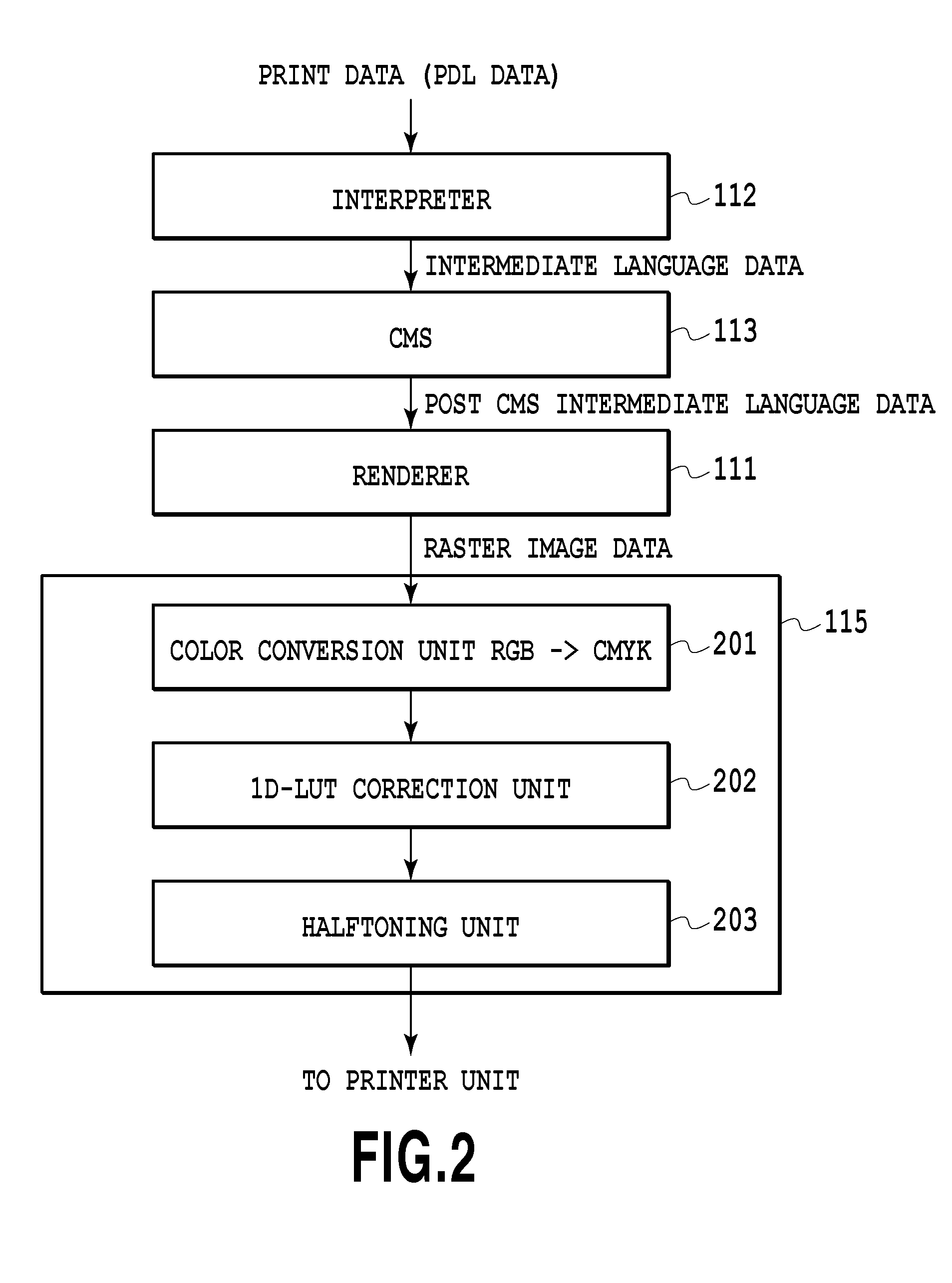Image processing apparatus, image processing method, and storage medium
a technology of image forming apparatus and color tone, which is applied in the direction of electrographic process apparatus, optics, instruments, etc., can solve the problems of large influence on image quality, change in density characteristics of printers, and consumption of toner, so as to prevent unnecessary calibration
- Summary
- Abstract
- Description
- Claims
- Application Information
AI Technical Summary
Benefits of technology
Problems solved by technology
Method used
Image
Examples
first embodiment
Configuration of Image Forming Apparatus
[0040]FIG. 1 is a diagram showing an internal configuration of an image forming apparatus having a calibration function according to the present embodiment.
[0041]An image forming apparatus 101 includes a controller unit 102, a printer unit 103, a scanner unit 104, and an HDD 120.
[0042]The controller unit 102 includes various kinds of modules, such as a CPU 105, and each module is connected to one another via a data bus 121. A RAM 107 loads program data stored in a ROM 106 and temporarily stores the program data. Then, the CPU 105 gives a command to each module in accordance with the program loaded on the RAM 107 and causes the image forming apparatus 101 to operate. Data etc. generated at the time of each module executing a command is also stored temporarily in the RAM 107.
[0043]A network I / F 108 is an interface module with a network 121. For example, the network I / F 108 performs data communication, such as communication with another device vi...
second embodiment
[0107]In the first embodiment, the maximum density check processing is performed for each calibration. Next, an aspect is explained as a second embodiment, in which the possibility that the density characteristics have changed is examined and the maximum density check processing is performed only in the case where the possibility is equal to or greater than a fixed value. Explanation of the portions in common to those of the first embodiment is omitted or simplified and different points are explained mainly.
[0108]In the present embodiment, by taking into consideration the possibility that the progress of the calibration will be delayed during the processing including the chart data acquisition processing and the preceding processing, the possibility that the density characteristics have changed is determined before the maximum density check processing. Specifically, whether a phenomenon that will cause the change in density has occurred during the calibration is determined based on ...
third embodiment
[0118]In the case where a calibration table is created despite the fact that the density characteristics have changed, the completed calibration table will be one that corrects the state before the density characteristics have changed. With such a calibration table, it is not possible to output the gradation of the target table (tgtLUT), and therefore, in the first and second embodiments, in the case where the amount of change in the density characteristics is equal to or more than a fixed amount, the maximum density adjustment processing is performed again from the beginning. On the other hand, in the case where the calibration is performed again from the maximum density adjustment processing, because the time required to complete the calibration increases, the time a user has to spend increases and at the same time, the amount of toner and the number of sheets that are used in the processing also increase, and therefore, the burden on the user will be great. Consequently, an aspec...
PUM
 Login to View More
Login to View More Abstract
Description
Claims
Application Information
 Login to View More
Login to View More - R&D
- Intellectual Property
- Life Sciences
- Materials
- Tech Scout
- Unparalleled Data Quality
- Higher Quality Content
- 60% Fewer Hallucinations
Browse by: Latest US Patents, China's latest patents, Technical Efficacy Thesaurus, Application Domain, Technology Topic, Popular Technical Reports.
© 2025 PatSnap. All rights reserved.Legal|Privacy policy|Modern Slavery Act Transparency Statement|Sitemap|About US| Contact US: help@patsnap.com



